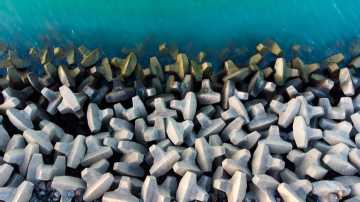We use first and third-party cookies for analytical and statistical purposes and to show you personalised advertisements based on a profile compiled from your browsing habits (e.g. pages visited). For more information, click on our Cookie Policy. You can accept all cookies by pressing 'Accept', you can reject all cookies by pressing 'Reject', or you can customize your choice by pressing 'Manage'.
The first call for the agri-food PERTE is here.

In a webinar organised by Bankinter and our partners from the FI Group, a consulting firm specialising in European funds with twenty years of experience, the keys to opt for financing from Next Generation funds were shared. A PERTE with high strategic value: its impact will not only be economic, in an industrial sector that is so important for Spain, but also social and environmental.
The time is now. The experience of previous PERTE teaches us that there is a very important technical part behind these processes, with the recommendation of being very well advised. The substance (the project) and the form (the file) must fit together. It is a very complex procedure, and when the call is published in November 2022, there will only be a short amount of time to submit applications.
On 1 August, the Official State Gazette published the Regulatory Rules and Regulations of the agri-food PERTE. Specifically, for the first of the three calls foreseen in the PERTE, which is intended for industrial strengthening of the agri-food sector through tractor projects presented through groups of companies.
A first phase aimed at the transforming industry
The Strategic Project for the Recovery and Economic Transformation (PERTE) of the agri-food sector was approved by the Council of Ministers on 8 February 2022. It foresaw a mobilisation of public funds of 1,002.91 million euros in 2022 and 2023, which will allow the creation of 16,000 jobs and will generate an impact of 3 billion in the Spanish economy.

From the outset, the government made it clear that it was open to a larger injection of Next Generation funds. And this is what happened: three months later it agreed to mobilise an additional 800 million euros. In other words, with these 1.8 billion euros, it is the sixth PERTE with the largest financial endowment of the 11 approved so far in Spain.
The agri-food PERTE will be developed through three axes, each one with their respective calls:
- Improvement of competitiveness, sustainability and traceability, and food safety. It has been endowed with 500 million euros and is the one that has just been announced. Initially, 400 million were allocated to this section, but another 100 million have been added, which are expected to be paid out in grants. It has just been activated and is very focused on the processing and transformation industry, more than on the primary sector (agriculture and livestock).
- Digitising all workers in the sector's value chain. With 454.35 million euros' worth of funding.
- R+D+i. Support for technology research, innovation and technology transfers, It will have 148.56 million euros' worth of funding.
The 3 sectors that will benefit the most from PERTE
This first call, as we said, is very focused on the processing and packaging industry. It excludes the primary sector and activities already covered by the Common Agricultural Policy (CAP). The fishing industry is also outside the umbrella, which is why the Government is finalising a specific project for the canning sector, as well as sectors with very high aid intensities, such as fruit and vegetables.
Farmers and livestock breeders can participate in the PERTE, but not as direct beneficiaries of the aid, rather as subcontractors of the consortium companies.
The sectors and companies that believe that they do not fit in this first PERTE call have a variety of calls available. FI Group, the consulting firm with which Bankinter works on European aid, are experts in finding the best solution for each investment and each company. And this can go through the PERTE or other formulas.

FI Group have their own methodology with some highly valued steps and the result of two decades of experience:
- Explore investments that the company requires and identify the most strategic lines.
- Map opportunities: the analysis of the project and the strategy we want to carry out.
- See which calls, including this PERTE, suit the company.
- Study the consortium formula, its adequacy to the criteria of the call and the quality of its members (their financial status, through a stress test to detect if there may be problems during the validity of the PERTE).
- Strategic and technical advice throughout the preliminary process, the presentation of the file and the granting of the aid.
A call centralised by the Ministry of Industry
As we said, the rules and regulations for the first call have already been published. Throughout 41 articles, four additional and final provisions and eight annexes, the Regulatory Rules and Regulations are like the small print of the PERTE. This first axis will be managed by the Ministry of Industry, Tourism and Commerce.
We must remember that the agri-food PERTE, unlike other strategic projects of European funds, has not been fully or partly ceded to the Autonomous Communities due to the characteristics of the industry and the forecast that applications will cover several territories. The Ministry of Agriculture, Fisheries and Food and the Ministry of Industry will pilot the different PERTE calls.
What is a tractor project?
It is a set of initiatives and investments of a group of companies seeking to transform their business model through digitisation, sustainability and traceability, and food safety. The projects that are presented must focus on the third block, which is mandatory in all cases.
An example of an ecosystem of companies capable of grouping together and lead a tractor project:
- Milk and dairy product companies.
- Cheesemongers.
- Baby food companies.
- Alternative beverage brands (for example, almond milk).
- Technological, veterinary, industrial machinery and sustainable packaging companies.
What types of companies can participate in the grouping of companies?
- Private trading companies.
- Cooperatives.
- Agrarian transformation societies.
How many companies should form the consortium?
At least six companies (four of them SMEs). One of them must be a large company. SMEs can only participate in a consortium if two of them are medium-sized companies. The group of participants must cover at least two autonomous communities.
The groups may subcontract up to 50 percent of each of the primary projects. And startups can participate within the SMEs. We mustn't forget that innovation is rewarded in the evaluation criteria.
Are there direct grants or just loans?
Both. The fundable budget of each tractor project will be at least 15 million euros. Direct aid, for example, to medium-sized companies ranges from 35% to 60% of the eligible cost, or from 45% to 70% in small and micro-enterprises.
Until when can the projects be executed?
The publication is expected in November 2022. Fi Group estimates that the filing period will open around Christmas, although this is yet to be confirmed. The project execution deadline is 30 June 2025.

The three action blocks of the tractor project
Companies must incorporate initiatives in at least two of these three blocks into the tractor project, which may be mandatory or voluntary and must be adapted to one of the two lines of action provided for in the PERTE:
- Line of research, development and innovation.
- Line of innovation in sustainability and energy efficiency.
We review some of these initiatives.
Competitive block
We talk about competitiveness understood as digitisation:
- Process automation.
- Sensorisation and Big Data.
- Robotics and artificial vision systems.
- Innovation in supplies and logistics.
- Artificial intelligence.
Sustainability block
Global commitments to minimise the impact of companies:
- Energy saving in plant.
- Reduction of the consumption of raw materials.
- Renewable energy and solar self-consumption.
- Water saving.
- Packaging ecodesign.
Traceability and food safety block
This block is mandatory for any tractor project. It is the one that has generated the most uncertainty in the sector, but the official information handled by FI Group is that the criteria will be more lax. Some of the actions of the first axis, such as sensorisation, can be included in this block. The groups must present a detailed plan in this matter. It can incorporate, for example:
- Implementation of blockchain technology in all phases of the process included in the project.
- Design and implementation of marking and reading systems in each phase of the process.
- Design and implementation of quality control and food safety systems that are necessary to meet the requirements established in the plan presented.
What does blockchain technology mean in the sector? It is how to elevate what we already have to a higher level: from the moment the raw material is obtained until it reaches the processor, the packaging plant and the wholesaler, the different digital certifications that are already carried out (quality control, animal welfare, etc.) will now be protected by blockchain technology so that no one can manipulate that data as it is encrypted.

The advantages of participating in a tractor project
- Raise the total budget of the investments that companies need. They are financed in the form of grants and loans and with better conditions than the CDTI (Centre for Industrial Technological Development) line.
- The maximum aid intensities. We are talking about R&D projects with high intensity and flexibility, greater than the other grants available today.
- Lead transformative projects with corporate reputation. Appearing in the PERTE brings a great competitive prestige in the market.
- Single display window. Not having to go to several windows and wait for each concession separately. With the PERTE, the presentation of files is optimised.
Information obtained from the webinar “Working towards a sustainable, competitive and digital agri-food industry” organised by Bankinter CFO Forum. With the participation of:
- Emma Montserrat: European Union Fund Manager and Deputy Assistant Managing Director in Bankinter.
- Carmen Ovejero: Sector Leader in FI Group.

